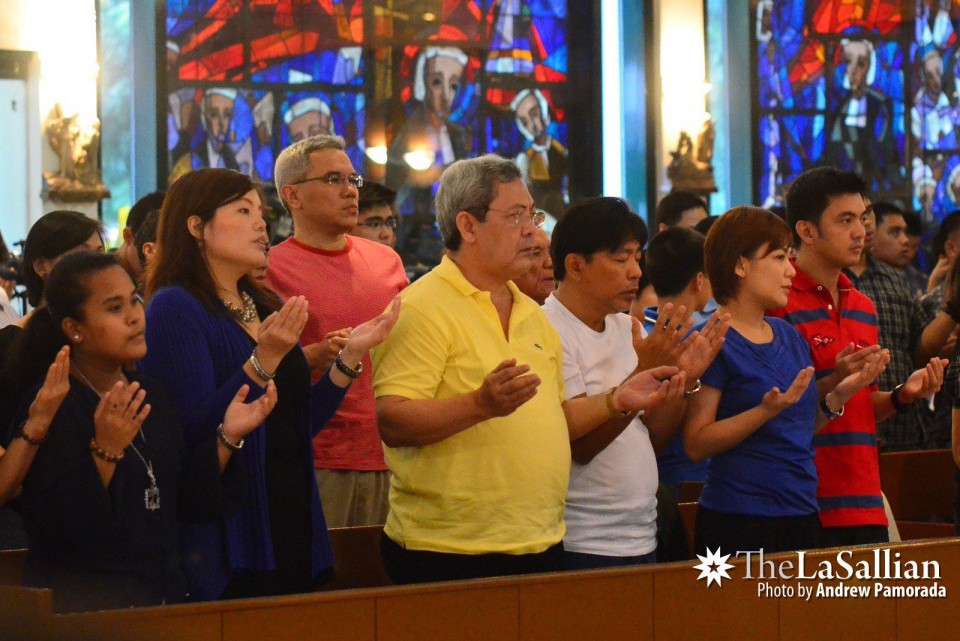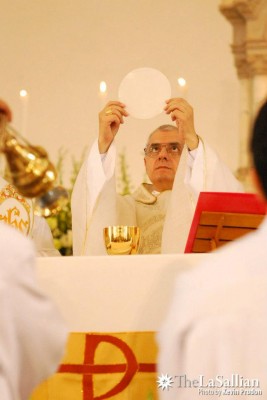Perhaps you are now safely tucked away in the province, with the tale of Christ’s Passion blaring away in chant form from one of the bahay na bato situated near the poblacion. Droves of people are milling about the plaza from one basilica to the next in celebration of what is called a visita iglesia, and the carinderia peddling beer and pork barbecue have closed down in a sudden fit of conscience.
TOGETHER. More than a time for a weekend vacation, Holy Week was for Catholics the original ‘greatest time of the year.’
Really, though, why is it that Catholics suddenly drop the meat and liquor and take to visiting not less than five churches in the span of one, long, hot, languorous summer’s day? To help cure your bamboozled rational mind, The Menagerie presents some quick facts on why Roman Catholics – and incidentally almost 85 percent of Filipinos – celebrate this ‘Holy Week’.
‘The Great Week’
Like all dates sentimental and meaningful to most persons, Roman Catholics have taken to remembering the last moments of Jesus Christ’s earthly life.
Living proof arrives in the writings of the Gallic pilgrim Aetheria dating back to almost 388 years after the death of Christ, when she made a trip to Jerusalem (no chairs involved) and found there people commemorating the ‘Great Week’, with Christians re-enacting the Passion and holding vigil over the sacred sites where Christ walked and spilled his blood.
Aetheria writes that back then, despite the maddening heat of a large amassed crowd, ‘The sobs and lamentations of the people exceeded all description.’
St. Athanasius of Alexandria wrote almost 50 years earlier of a week of austerity prior to Easter Sunday: “We begin the holy week of the great pasch on the tenth of Pharmuthi (month in the Egyptian calendar) in which we should observe more prolonged prayers and fastings and watchings, that we may be enabled to anoint our lintels with the precious blood and so escape the destroyer.”
It was also during that era when the Roman Emperor Constantine, the first Christian emperor, reputedly issued an imperial edict forbidding the conduct of public business during the celebration of the great week. Similar behavior can be observed until today, when businesses shut down their public operations during Maundy Thursday and Good Friday, often to work on internal concerns and maintenance.
The Roman traditions continue to this day, and have been passed on to the Filipino people by way of Spanish clergy who brought the tradition of commemorating Christ’s sacrifice to Philippine shores.
Special seven
The visita iglesia comes from a tradition known as The Seven Churches Visitation inuring from the devout spirit of Holy Week, typically done every Maundy Thursday. Pilgrims travel seven churches or religious sites, based on seven sites recorded in Biblical scripture, significant for their appearance after Christ’s capture from Gethsemane.
See if you can pinpoint them:
– John 18: 12-23;
– Mark 14: 53-63;
– Matthew 26: 56-57;
– Luke 23: 1-5;
– Luke 23: 6-12;
– Luke 23: 13-25;
and John 19: 1-6.
In the Philippines, the tradition is to recite the Stations of the Cross in seven churches, although it is acceptable to simply offer prayers to the Pope, recite the Pater Noster, Ave Maria and a Gloria Patri before plodding on to the next church.
A poor day for pork
For Catholics, Good Friday is the commemoration of Christ’s death on the Cross. For those selling or trading in pork and other forms of meat, it is a Bad Friday, as all Catholics are required to abstain from meat, much like Ash Wednesday.
Pope Paul VI’s Apostolic Constituion on Penance (Paenitemini) points to the spirit of penance that should prevail during Good Friday, as a means of reminding Catholics to turn away from sin and make reparation with the Lord who died for the sins of humanity.
THE BODY OF CHRIST. Catholics meditate on the Passion of Christ and take their next communion on Easter Sunday.
This spirit of penance, most emphasized and especially highlighted during the Holy Week, is manifested in abstinence from all use of meat but not eggs and dairy and animal fat supplements from meals. Fasting also applies – that is, the consumption of one meal per day with two permissible collations (i.e. small snacks).
These gestures are performed in order to distance the faithful from the passing concerns of the world, mortifying for the sins of the unrepentant and sharing in Christ’s mission of salvation through personal sacrifice.
A less formal answer may be because the warm-blooded animal to be consumed is resemblant of the Christian savior, an animal that ‘sacrificed’ its life in order to feed humans. Loosely, a cold-blooded animal like fish meets Catholic sensibilities in a more appropriate way, although other realpolitik answers suggest that depending on the political agenda of government, fish has been largely tied to the Catholic Church and its rule of exclusive fish consumption on Lenten Fridays.
Indeed, Lou Grouen, owner of a McDonald’s branch in largely Catholic Cincinnati, devised a special sandwich to circumvent low beef burger consumption during Lenten Fridays. This special sandwich is known as the Filet-O-Fish, a sales recovery and marketing success standardized for all McDonald’s branches served wherever Catholic palates abound.
Fasting applies for Catholics between 18 to 59, and abstinence must be practiced for those 14 years and up, during Ash Wednesday, Good Friday, and all Fridays of Lent.
A big cover-up
Upon visiting the church, one might be bemused to see that these crazy Christians have covered up all of the crosses! Why commemorate something when one would not even be able to sight the religious iconography?
The veiling of crosses and images was a tradition from the dark ages of the Church in Germany, when a huge cloth (hungertuch or ‘Hunger Touch’) would be draped over the altar during Lent to remind the faithful of the season’s themes of self-sacrifice and penance; the practice has extended to religious icons and imagery of Christ in the Catholic churches.
The cloths are to be unveiled on Easter Sunday in a manner similar to the resurrection of the Lord, that appeased the ‘hunger’ of the faithful to see the icon of Christ.


